
Buddhism is the most popular religion in Singapore with about 33% of the local residents identifying themselves as Buddhists. With close to 200 years of presence in Singapore, there are many Buddhist temples located all over the island.
Bodhi Travel is excited to curate a series of Bodhi Walk - walking tours set in the historical neighbourhoods of Singapore. During the Walks, our tourist guides will be sharing the history and cultures of these amazing places in addition to the Buddhist temples.
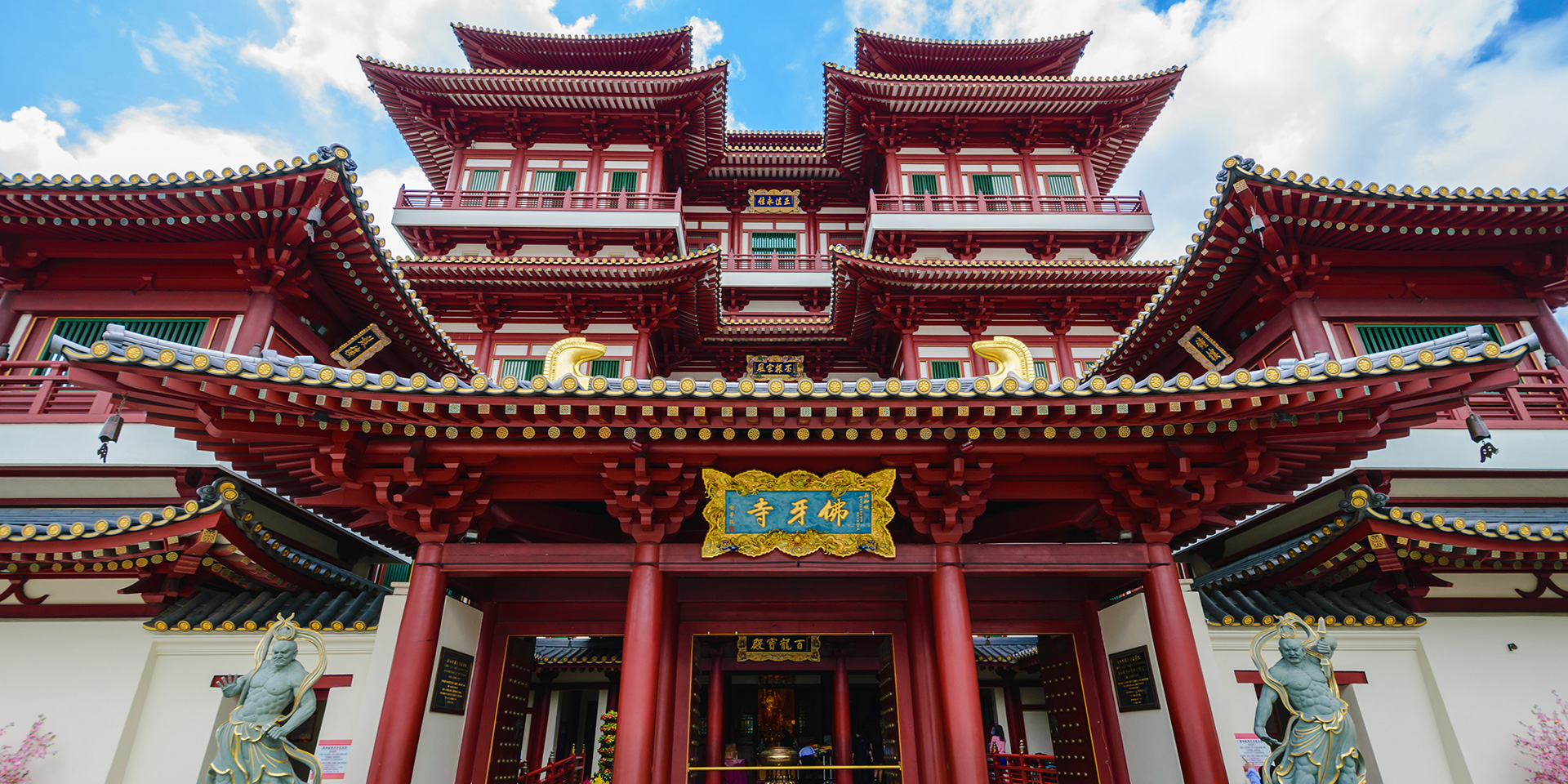
Buddha Tooth Relic Temple and Museum, Singapore
The Buddha Tooth Relic Temple and Museum (BTRTM) is a relatively new Buddhist temple in Singapore. The Temple is the result of Venerable Master Shi Fa Zhao’s mission to locate a prominent place to house a Buddha Tooth and also to showcase Buddhist culture to local community.
Located within Chinatown, the imposing BTRTM is designed to be open to visitors with almost all parts of the building available to visitors for viewing. Construction took about two years and the BTRTM was officially opened by the late President SR Nathan on 30 May 2007. Since then, the BTRTM is a popular destination for tourists visiting Chinatown.
Inside the BTRTM building are four storeys of Buddhist sculptures, statues and artefacts. Located within the main hall on the first level is the imposing and majestic statue of the Maitreya Bodhisattva (or Buddha Maitreya in the BTRTM). The mezzanine to the third floor features prominent Sanghas, construction process of the BTRTM and the Life of the Buddha respectively. On the rooftop is a garden where visitors can relax amidst the buzz of Chinatown.


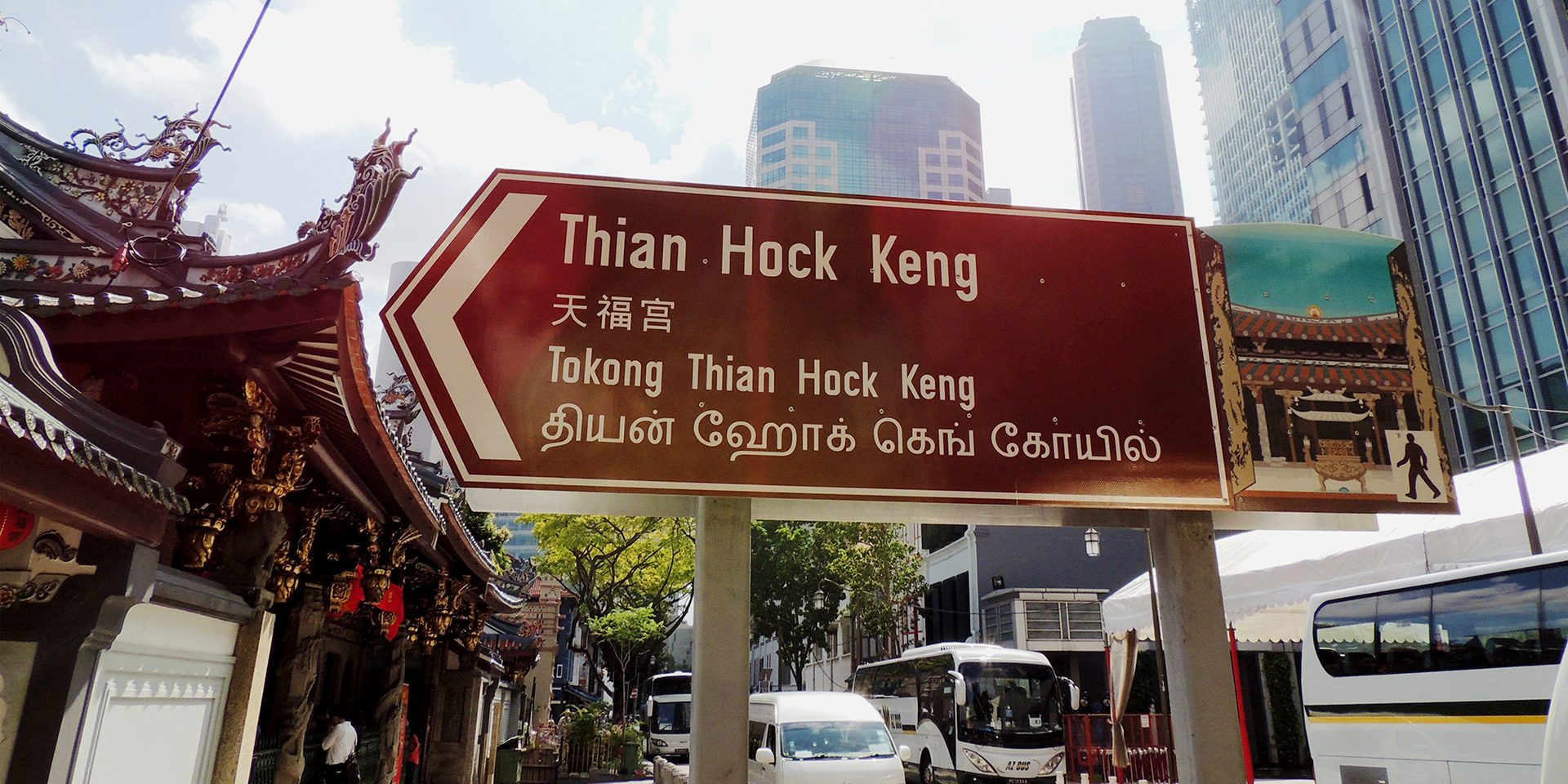
Thian Hock Keng Temple
Built in 1842, this is the oldest Hokkien temple and one of the finest examples of traditional southern Chinese architectures in Singapore. The Temple was initially a small hut which was rebuilt into its current form in 1842 with funds and donations collected from the local Chinese community. Since then, there were additions and renovations with the last major one completed in 2000.
Thian Hock Keng is a Hokkien (a Chinese dialect) term and translated literally into “Temple of Heavenly Fortune”. Thian Hock Keng Temple was the result of the gratitude of Chinese immigrants to Mazu (Goddess of the Seas) for their safe voyage from South China to Singapore. It was common for many to die during the long and difficult journey; many believed that the blessings of Mazu helped ensured their safety.
Although predominantly a Taoist temple, the Temple also contains aspects of Buddhism, Confucianism and Ancestral Worship. In addition to Mazu, the main diety, there are also shrines dedicated to other deities such as the Guan Yin Bodhisattva, Baosheng Dadi (God of Medicine and Health), Cheng Huang Ye (City God) and Confucius.


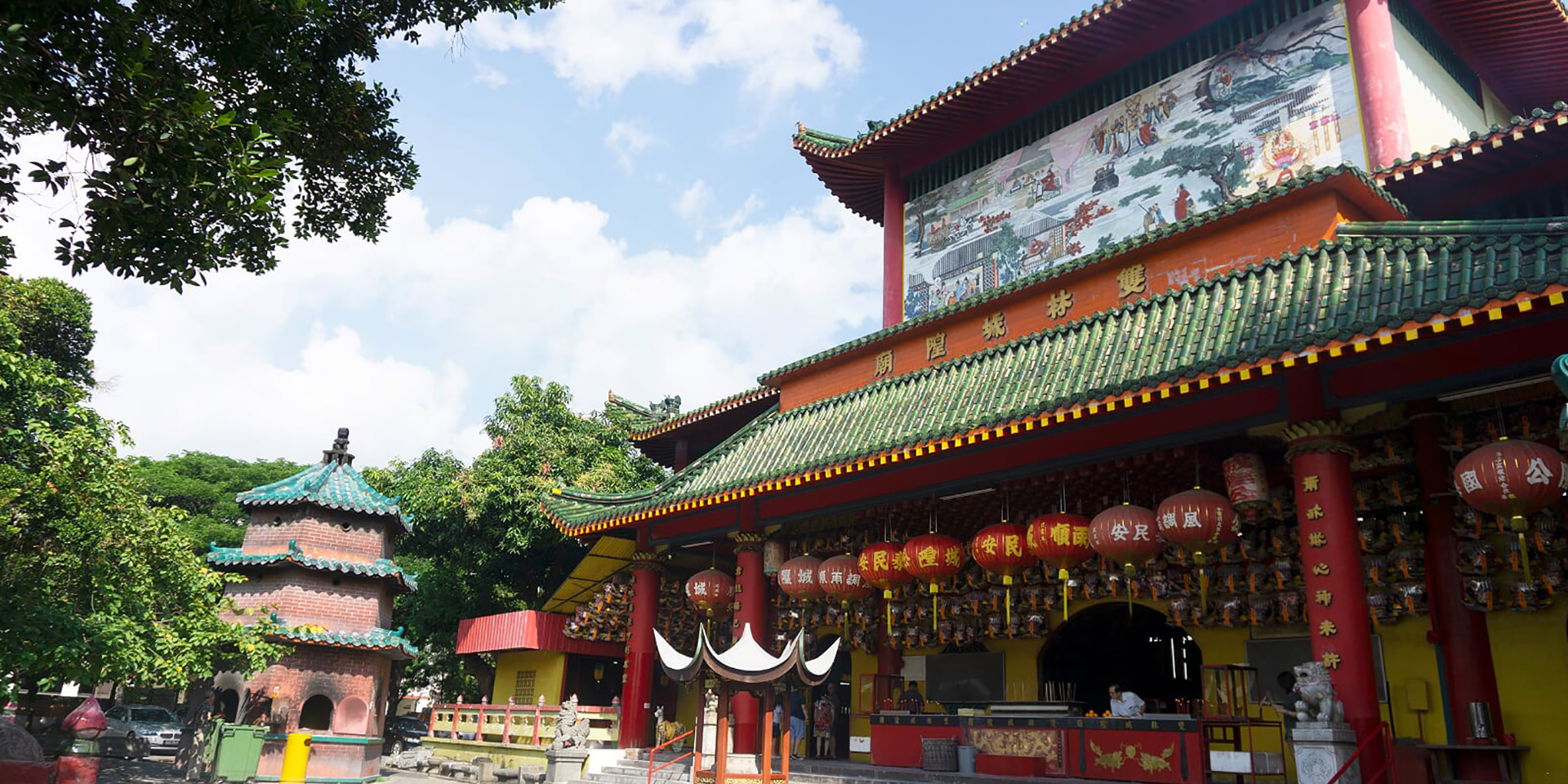
Shuang Lin Cheng Huang Miao
Shuang Lin Cheng Huang Miao (Temple of the City God) was built in 1903 at a cost of 3,000 Straits dollars. Today, this Taoist temple is frequented by devotees from all over the island. They come to offer prayers to any or every of the countless gods and goddesses venerated inside; among the more famous ones are Tua Pek Kong, the God of Wealth, Mazu, Madam Golden Flower, and Justice Bao. A busy place, the Cheng Huang Miao, is a good place for insights into the religious practices of the local Taoists.


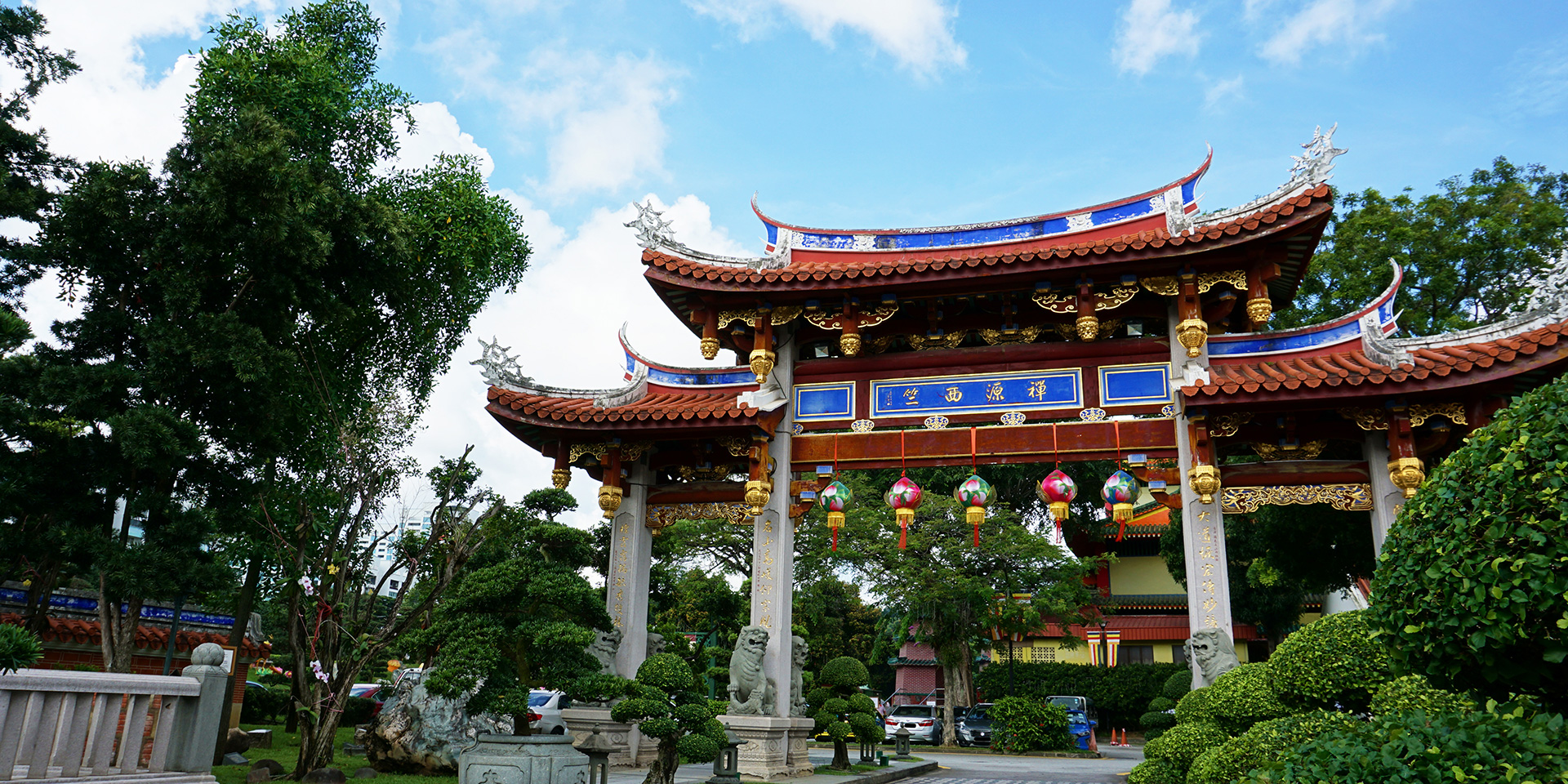
Lian Shan Shuang Lin Monastery, Singapore
Near to the Cheng Huang Miao is Lian Shan Shuang Lin Monastery (Twin Grove of the Lotus Mountain Temple) - the oldest Buddhist monastery in Singapore. Founded 120 years ago, this national monument remains today one of the finest Buddhist structures in Singapore in terms of architecture and conservation. During its construction, craftsmen and materials were transported from China to Singapore, thus ensuring that Chinese construction techniques and materials were used. In the 1990s, the temple was extensively restored at a cost of about S$40 million.
The Monastery is modelled after the Xi Chan Si (Western Zen Temple) in Fuzhou, China. Its design and layout is typical of the conglin architectural styles of Chinese monasteries. The main building in the Monastery is the Mahavira Hall which houses the Buddhas of the three worlds - Sakayumni Buddha, Medicine Buddha and Amitabha Buddha.
Filled with sculptures of Buddhas, Bodhisattvas and Buddhist deities and richly decorated with Chinese architectural motifs and cravings, Shuang Lin Monastery is considered one of the best (if not the best) representations of Chinese monasteries outside China. Shuang Lin Monastery is truly worth a tour with an experienced tourist guide explaining the histories and philosophies of the place.


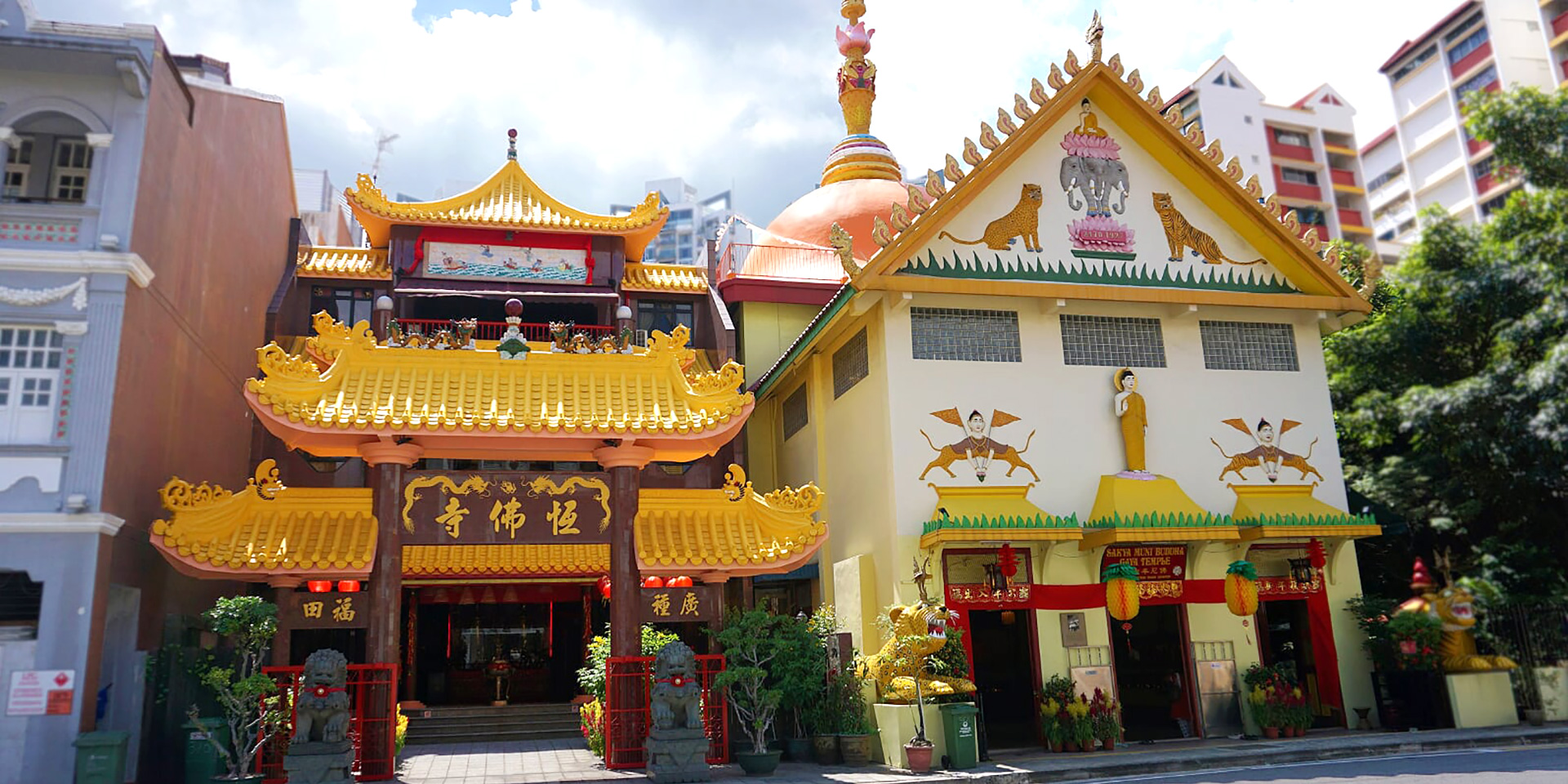
Sakya Muni Buddha Gaya Temple
Located at a less visited part of Little India and along Serangoon Road, Sakya Muni Buddha Gaya Temple often referred to as the Temple of 1,000 Lights. It features a 15-meter high statue of a seated Buddha, which weighs nearly 300 tons, as well as many smaller Buddha images and murals depicting the life of Shakyamuni Buddha.
Financed by the famous Aw brothers who came from Burma, the Sakya Muni Buddha Gaya Temple has an unique hybrid of both Chinese and Burmese architecture.


Singapore Chinatown - Cultural and Historical Temples Tour (3 hours)
This 3-hour walking tour takes you to some of the most historically important and visually stunning sights in the historic district of Chinatown.
We will be visiting:
Telok Ayer Street, Thian Hock Keng, Ann Siang Hill, Buddha Tooth Relic Temple and Museum
Singapore National Monument Shuang Lin Temple Tour (2 hours 30 minutes)
This 2.5-hour walking tour takes you to the very heartland of Singapore, to two of its oldest places of worship - Shuang Lin Cheng Huang Temple, a Taoist temple, and Lian Shan Shuang Lin Monastery, a Buddhist monastery.
We will be visiting:
Shuang Lin Cheng Huang Temple & Lian Shan Shuang Lin Monastery
Singapore Little India & Serangoon Road Tour (3 hours)
This 3-hour walking tour will bring you through each of the temple grounds and, through keen observation of the visual elements, you will get to learn about the short but eventful history of religions in Singapore, listen to moving stories behind the construction of the temples, learn to de-construct and compare Hindu and Buddhist iconographies, and appreciate the profound historical and philosophical connections between two of the world's oldest religions.
We will be visiting:
Little India Arcade, Campbell Lane, Sri Veeramakaliamman Temple, Sakya Muni Buddha Gaya Temple, Leong San Temple
Direct booking or group booking are also available, contact us now:
< You may read about our Disclaimer, Privacy and Data Protection Policy, Terms & Conditions and FAQs here. >




